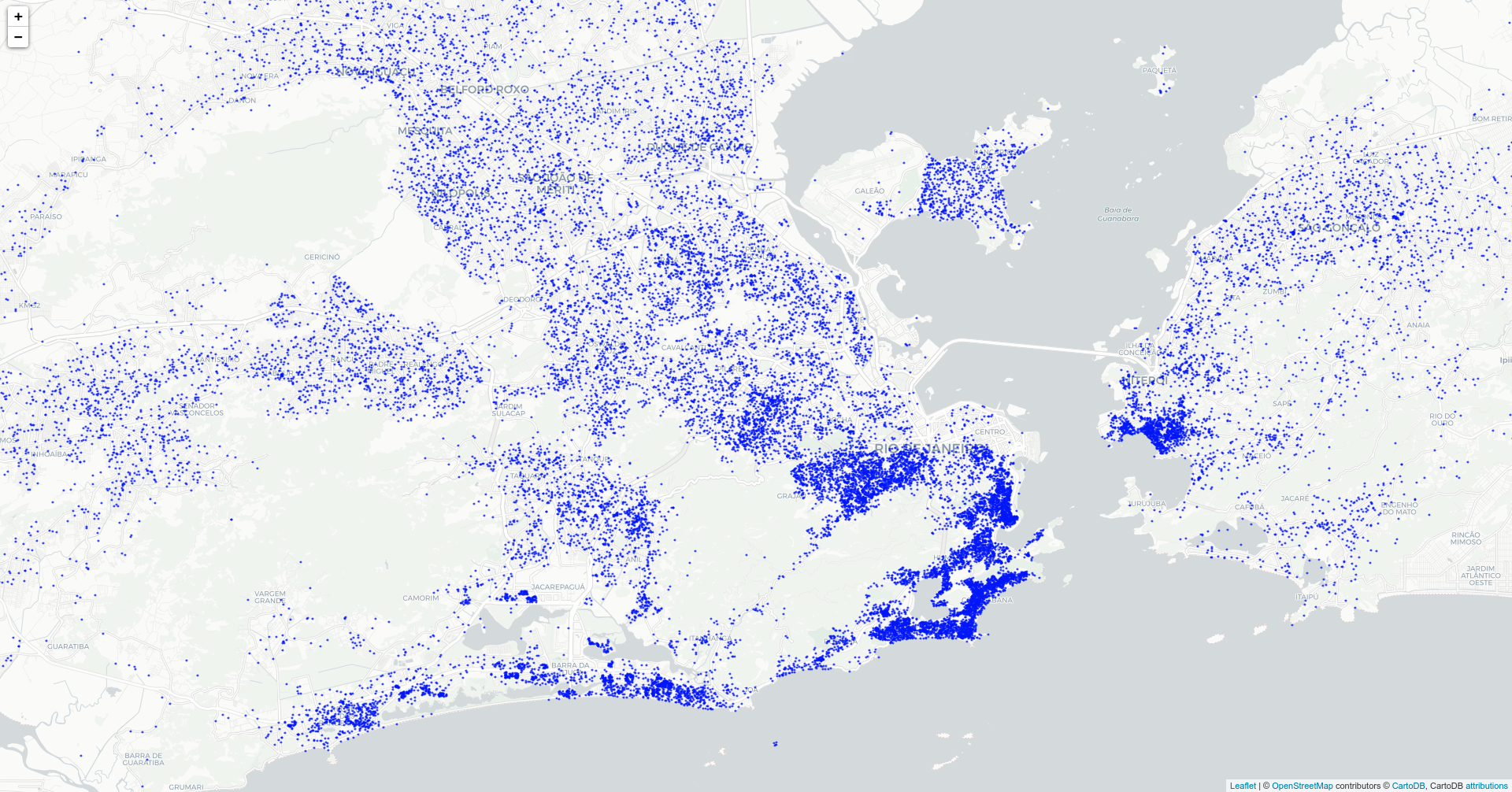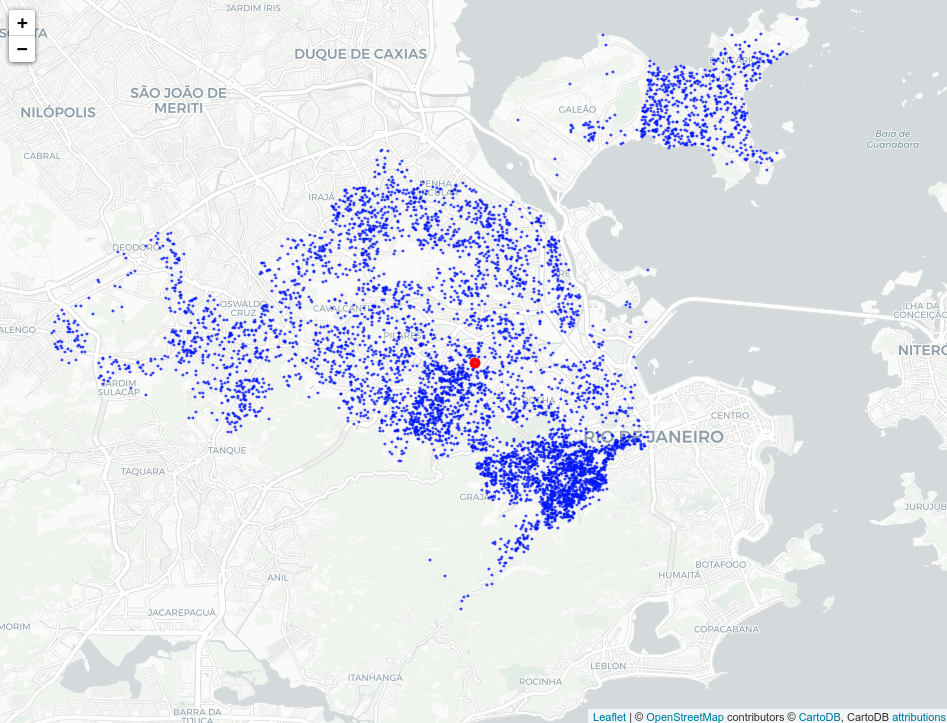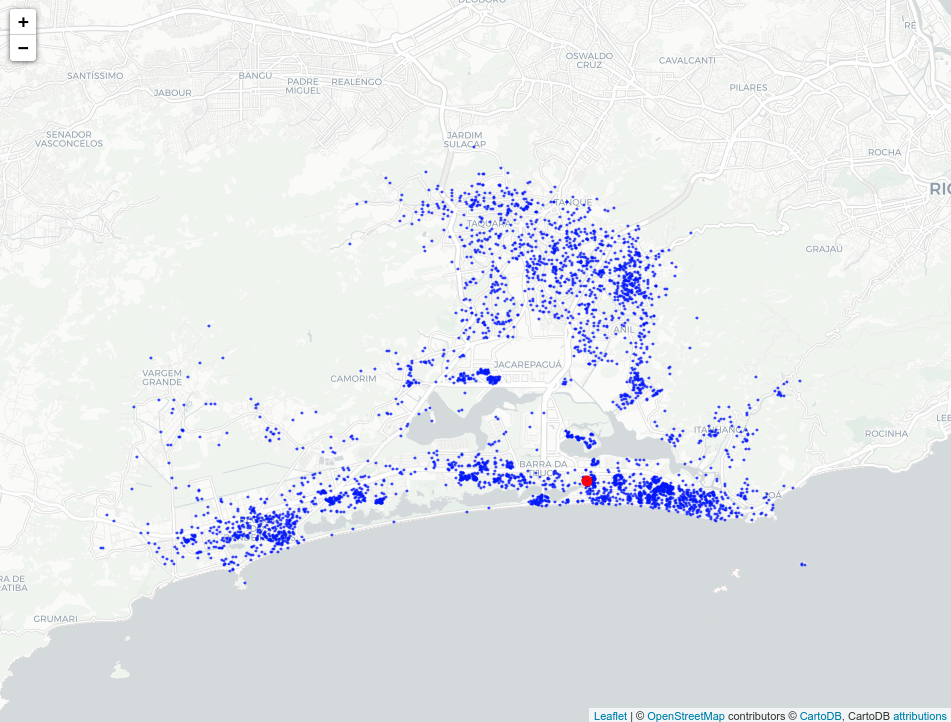The Loggi Benchmark for Urban Deliveries contains datasets and benchmark scripts for large-scale problems using as a testbed some of Brazil's largest cities. The data is synthesized completely from public sources and representative of the challenges we face on real world deliveries for the problems outlined in the repository.
To get started with the development using LoggiBUD, check out our quickstart tutorial.
The dataset simulates the challange of a large delivery company in the last-mile step of the supply chain. Worldwide, metropolitan areas like Rio de Janeiro witness the delivery of tens or even hundreds of thousands of parcels and mail. Deliveries on those areas are unexpectedly very unevenly distributed. Rich and densily populated areas drive most of the deliveries. Besides economic factors, our data also do consider the geography of the represented locations and real street travel distances, as the reality of complex cities is not well modelled by euclidian distances.
On our first version, We provide 90 train instances and 30 evaluation instances for the end-to-end problem on Rio de Janeiro (RJ), Brasília (DF) and Belém (PA). The instance sizes range from 7k to 32k deliveries. The challenge is to position consolidation hubs across the city and split demands into delivery vehicles.
While our goal is to solve the problem on an end-to-end manner, we also provide a baseline distribution of demands into 11 hubs obtained using a p-hub assignment. This leads to 990 train instances and 330 evaluation instances on the CVRP challenge.
This first task is a classic Capacitated Vehicle Routing Problem (CVRP) with minimizing travel distance as objetive. Although solving such large CVRPs with complete information is often impractical, these solutions are good targets for Task 2.
This is considered a particular case of Stochastic and Dynamic Capacitated Vehicle Routing Problems (SD-CVRP). The objetive is to sort deliveries into routes one by one as they arrive. You may use only historical information and the previously routed deliveries from the same instance. No recombination is allowed after assignment.
From an operations point of view, this solution class is a lot more powerful as it doesn't require full information before start routing. Instead, hub operators can route deliveries as they arrive.
This is an extension of the task 1.2, but without fixed dispatch locations. Therefore, locations and allocation of requests to dispatch locations is considered part of the solution, but should be the same accross multiple instances. This can be considered an end-to-end optimization of last-mile delivery operations.
This benchmark is an effort to make new operations research solutions closer to real-world applications faced by delivery companies. We believe this work can help both practitioners and academics to reduce the gap between state-of-the-art and practice.
We identify that several promising solutions in academic literature have evaluation issues. Several papers only include experiments for small or unrealistic problems. We also expected real-world instances to help researchers to come up with new ideas for solving large routing and location problems.
There are several famous datasets for the Vehicle Routing Problem (VRP). However, there are limitations to these instances that make them hard to apply to real-world last-mile problems. Some of them include:
- Small instances
- Ignore streets, use only euclidean distances
- No discussion on aggregation levels
Most instances also fail to model real challanges of dynamic and stochastic instances, where the stochastic information is usually presented as probabilities on deterministic points. We instead present stochastic information as historical deliveries performed under the same distribution.
We want to make publishing results as easy as opening a pull-request. We also want to provide you with code to evaluate your solution and make sure it's ready for publication. If you're not familiar with making open-source contributions, don't worry. Open an issue, and we'll be happy to guide you with your submission.
To include your method to the benchmark leaderboards, you must submit the solution data into a pull request.
While submitting the code is not required, we strongly suggest making your research code available to make reproducing the results more accessible. You can publish the code on your repository and include a link on your submission. We also have some baselines on this repository. If you want to include your code as a baseline, we'll be happy to revise it.
Don't forget to acknowledge the literature and code you have used on your solution.
If you want more details on how we generate our instances and how they relate to actual deliveries, please check our generation pipeline documentation. It also includes the steps for reproducing the provided instances.
If you use this data in academic work, please cite our repository. A full paper describing it should be available soon.
author = {Loggi},
title = {loggiBUD: Loggi Benchmark for Urban Deliveries},
year = {2021},
publisher = {GitHub},
journal = {GitHub repository},
howpublished = {\url{https://github.com/loggi/loggibud}}
}
This repository is not an official Loggi product. Use it at your own risk under the terms of the MIT license.




